Sugar Free Bread and Butter Pickles
These homemade Sugar Free Bread and Butter Pickles are the perfect accompaniment to a southern summer dinner of fried chicken, fresh peas, corn, and tomatoes. This tangy combination of cucumbers and onions is preserved in a spiced brine sweetened with a sugar substitute. Try them as a counterpoint to any sandwich or dice a few and toss them into your potato salad.
One of the joys of summer for me is preserving some of the abundance of fresh produce to use throughout the year. The ritual of getting out the canner, the tools, the jars, lids, and rings makes me feel so productive.
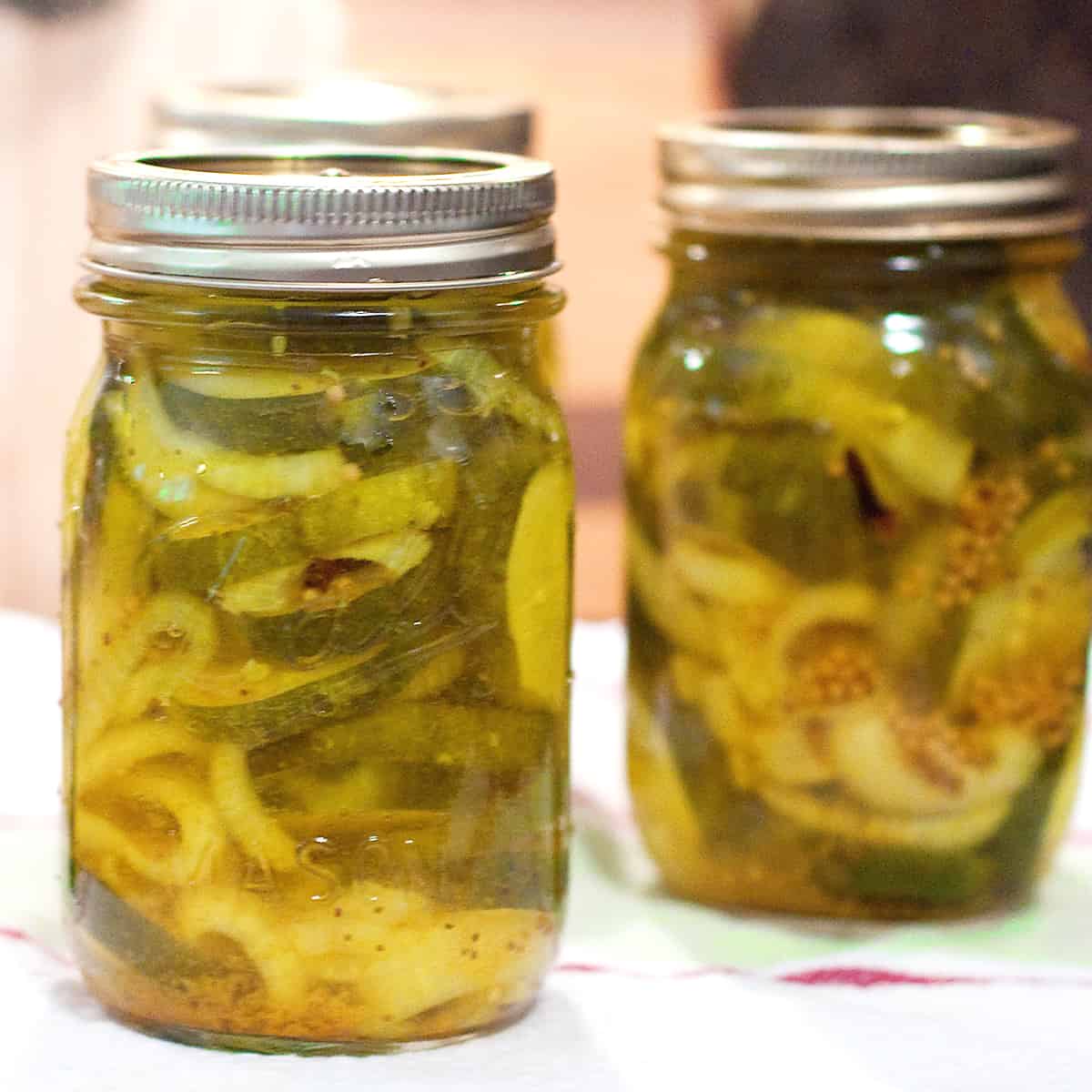
I usually do several types of fruit preserves along with our Favorite Kosher Dills and Pickled Okra. The only thing I don’t like about homemade preserves and sweet pickles is the amount of sugar that most traditional recipes require.
Most fruit preserves call for as much, and sometimes even more, sugar as fruit. Typically an exact pound-for-pound measure. And the same with sweet pickles.
I just feel so guilty pouring all that refined white sugar over that gorgeous fresh produce! That’s why I started looking around for a bread and butter pickle recipe without all the usual sugar.
I really love bread and butter pickles with their mix of cucumbers and onions in that sweet, tangy solution. They’re one of my favorites! But my old standard recipe called for 2 1/4 cups of white sugar. Eeek!
I could just never feel good knowing I was eating all that sugar. So when I found a recipe that uses sugar substitute I thought I’d give it a try.
Now, these Sugar Free Bread and Butter Pickles don’t have the exact taste of a “B&B” made with sugar, but they’re really darned close. If you enjoy bread and butter pickles but want an alternative, then these might be just what you’re looking for, too.
If you’re looking for good canning recipes that use less sugar, some great resources include the University of Georgia’s National Center for Home Food Preservation, PickYourOwn.org‘s website, and Healthy Canning. You’ll find really great information on all of those.
🛒 Ingredient Notes
This post contains affiliate links. Lana’s Cooking is reader-supported and earns a tiny commission at no extra cost to you when you shop from our links.
- Pickling Cucumbers – Pickling cucumbers are the short, plump cucumbers often labeled as “kirby” or “salad” cucumbers; do not use cucumbers that have been treated with wax.
- Onion – Your choice of yellow or white.
- Kosher Salt – I recommend Morton brand kosher salt.
- White Vinegar – The vinegar must be at least 5% acidity.
- Sugar Substitute – This recipe is tested and proven safe with Splenda brand sugar substitute; I have no information on using other substitutes for the recipe.
- Mustard Seed – Whole yellow mustard seed is available in most grocery stores’ spice aisle or may be ordered online.
- Celery Seed – Again, easily sourced through your local grocery store or online. Be careful not to pick up celery salt – they’re often side by side and look very similar.
- Ground Turmeric – Turmeric has a nice earthy flavor and gives a beautiful yellow color to the brine.
- Whole Cloves – Part of the distinctive spice profile for bread and butter pickles.
You’ll find detailed measurements for all ingredients in the printable version of the recipe at the bottom of this post.
🔪 You’ll Also Need Some Equipment
- Canner with rack
- Colander
- Canning funnel
- Jar lifter
- Magnetic lid lifter
- Canning jars, lids, and seals
👉 PRO TIP: It may be more economical to purchase a canning set that includes all of the tools you’ll need except the canner, jars, lids, and seals.
🥄 How to Make Sugar Free Bread and Butter Pickles
Prepare the Cucumbers and Onions
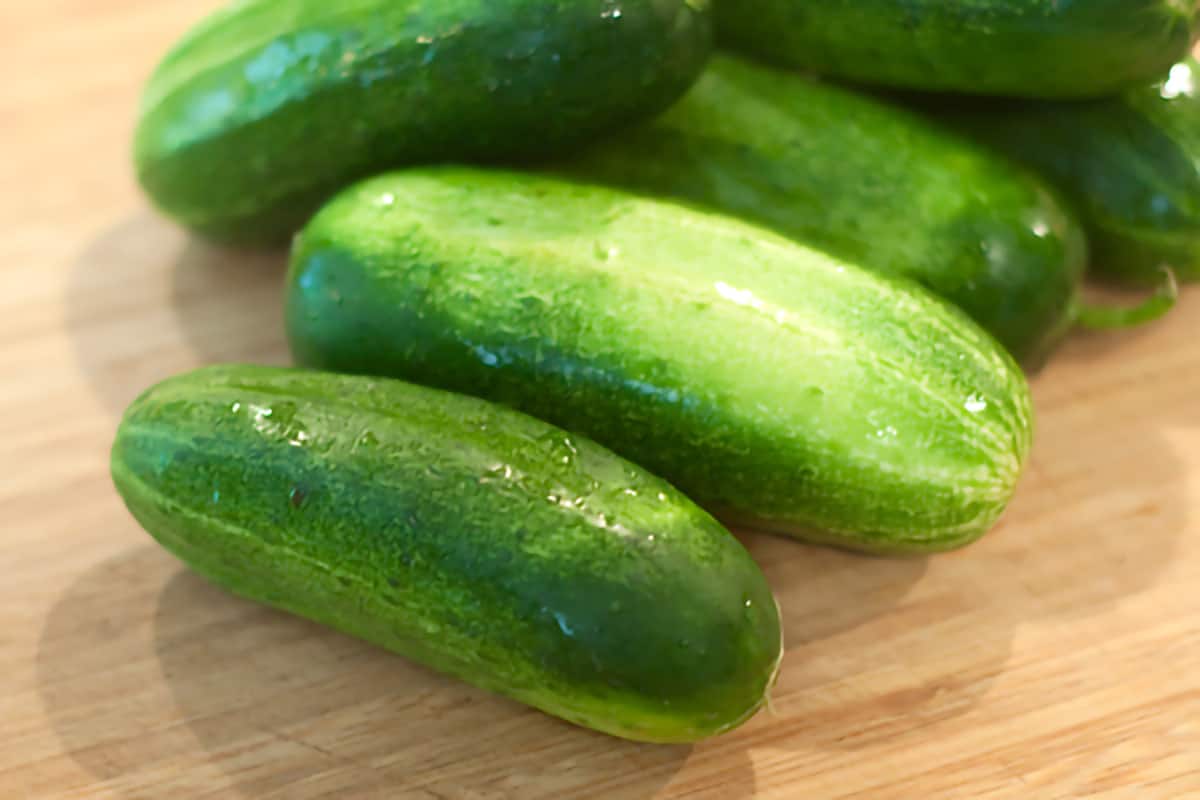
- Prepare the cucumbers by washing them thoroughly to remove any dirt from the skin. Cut off a tiny 1/16 inch slice from the blossom end of each cucumber.
👉 PRO TIP: Make sure to select only pickling type cucumbers for your pickles. These are usually labeled as “kirby” or “salad” cucumbers. Avoid using cucumbers with a waxy coating. The coating will interfere with the pickling process.
👉 PRO TIP: Why remove that tiny sliver from the blossom end? Well, actually there’s an enzyme in the blossom end that can cause pickles to be too soft. Removing that tiny slice will help eliminate that problem.
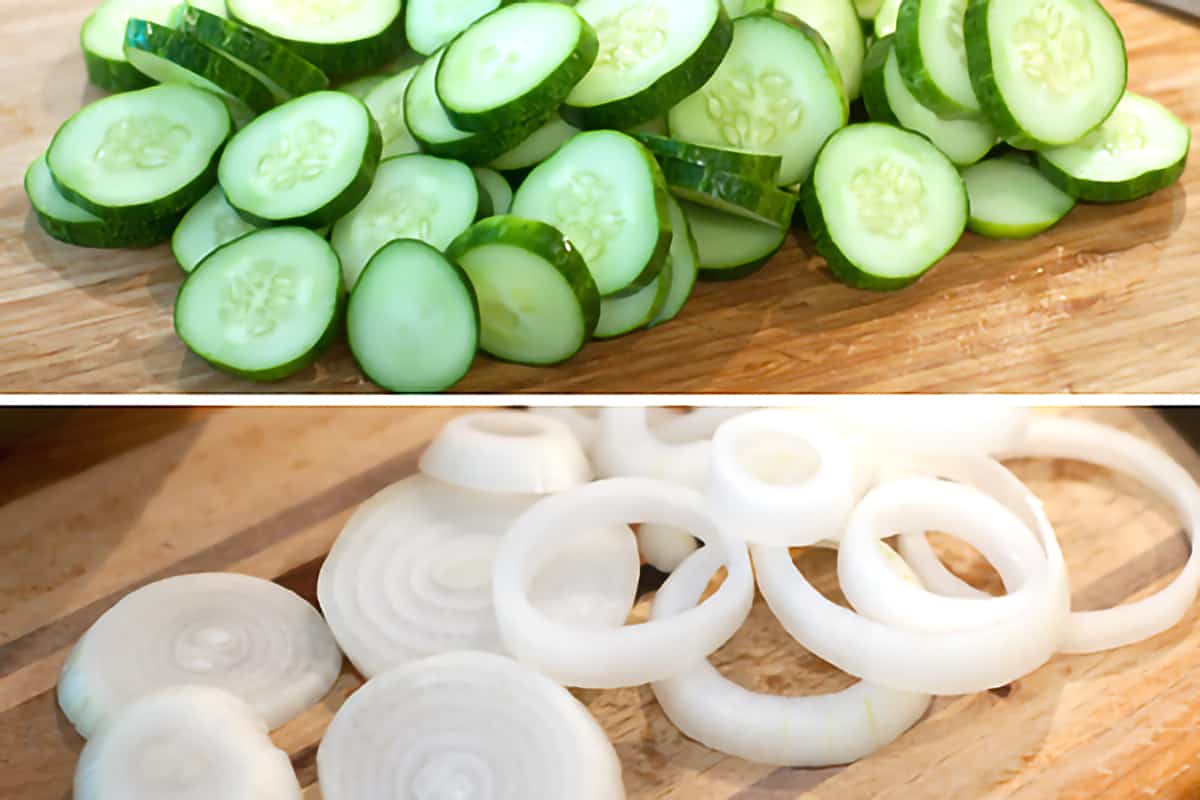
- Slice the cucumbers into rounds approximately 1/4 inch thick.
- Peel the onion and slice it into 1/4 inch thick slices as well. Separate all the onion rings.
Salt the Vegetables
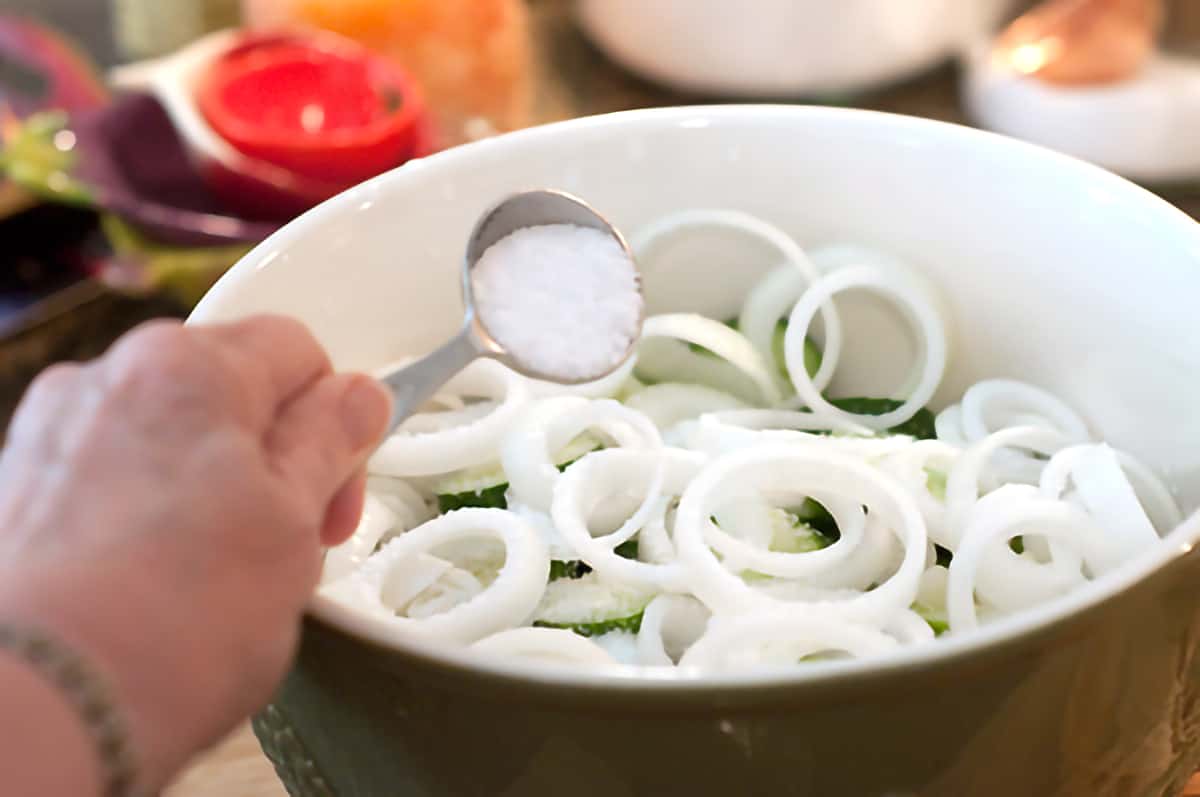
- Place the cucumbers and onions in a large bowl and sprinkle with the salt. Toss so that the salt is distributed throughout the vegetables. Allow them to stand at room temperature for two hours.
Rinse and Drain the Vegetables
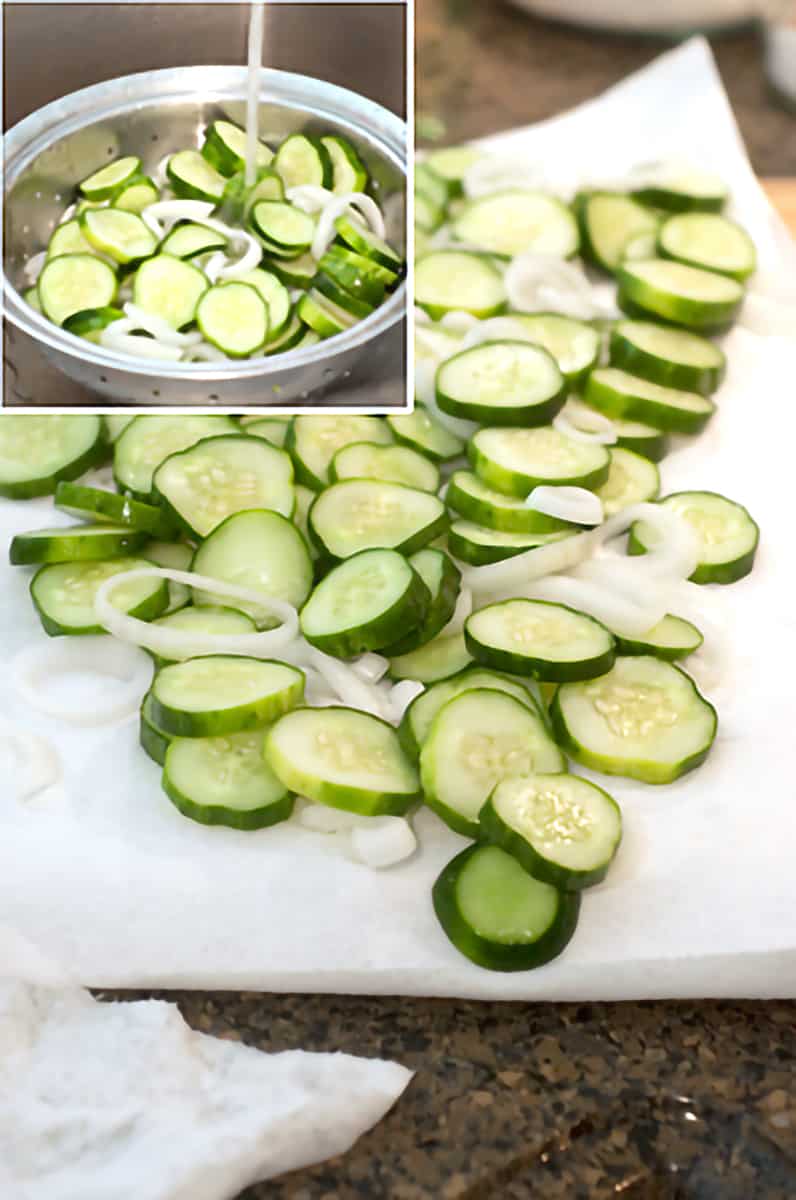
- At the end of the standing time, drain the cucumbers and onions in a colander. Rinse thoroughly with cold water and drain again. Spread the vegetables on a double thickness of paper towels and pat dry with additional paper towels.
Prepare the Jars and Lids
- Wash 3 pint (or 6 half-pint) standard canning jars in hot soapy water. Rinse the jars thoroughly with hot water. Prepare the lids and rings according to the manufacturer’s directions. Set the jars, lids, and rings aside on a clean kitchen towel.
Heat Water in the Canner
- Fill a canning pot 3/4 full of water. Set the canner on the stove, add the jar rack, along with the clean jars and bring the water to a low boil. Keep the lids warm in a separate small pan of water set over the lowest heat possible.
Make the Pickling Liquid
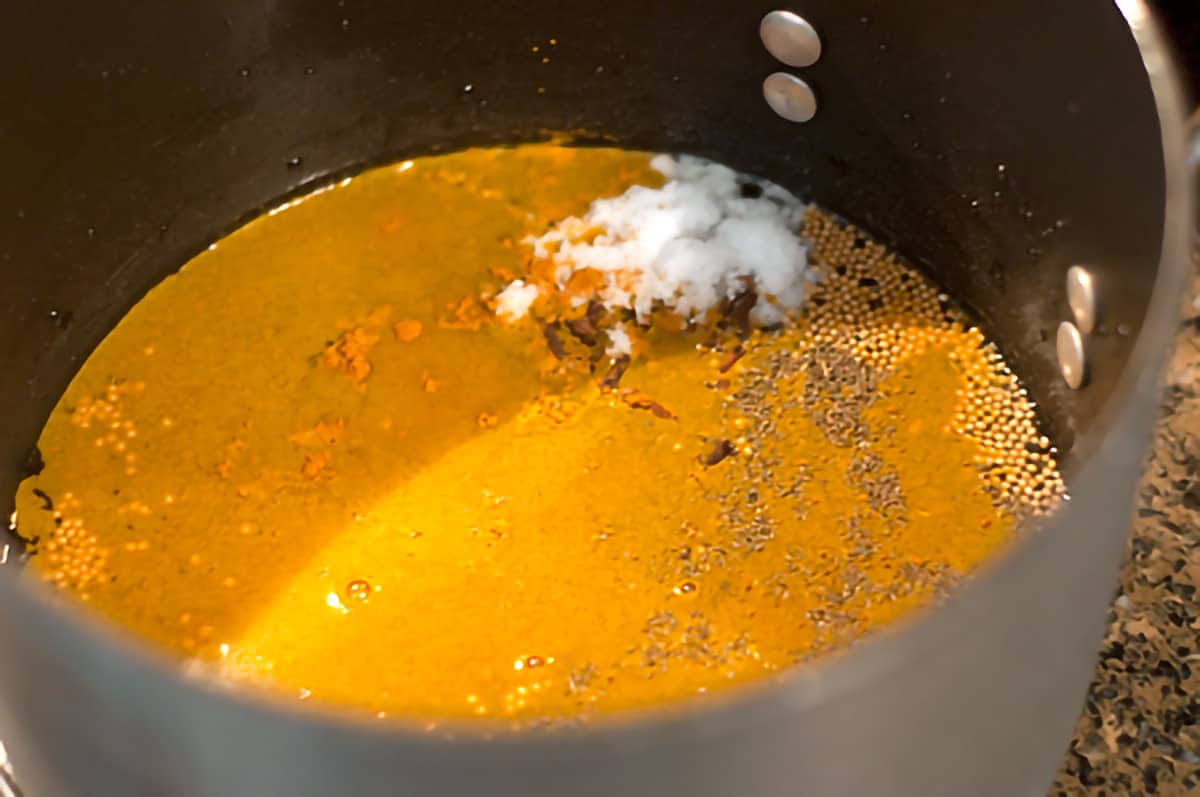
- Combine the vinegar, sugar substitute, mustard seed, celery seed, turmeric, and cloves in a large non-reactive saucepan. Bring the mixture to a boil over medium-high heat.
Add Cucumbers and Onions to Pickling Liquid
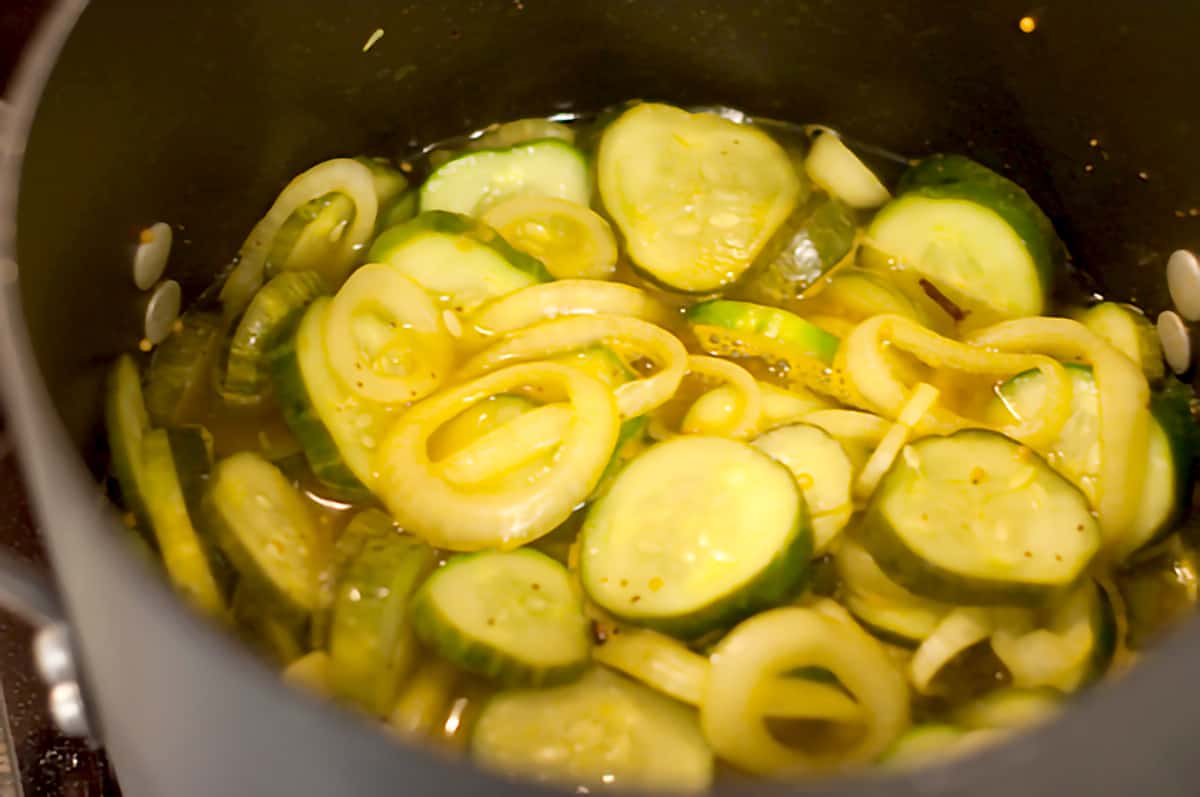
- Gently stir the cucumbers and onions into the pickling liquid and allow it to return to a boil. Remove the pan from the heat.
Fill and Process Jars
- For this part of the process, you will work with one jar at a time. Use a canning jar lifter to remove a jar from the boiling water in the canner, allowing the hot water to drain back into the pot.
Use a slotted spoon to remove vegetables from the pickling liquid and lightly pack them into the hot jar. Fill the jar so that about 1/4-inch of space remains at the top.
Ladle in pickling liquid to cover the vegetables. Use a canning funnel to make the filling process easier.
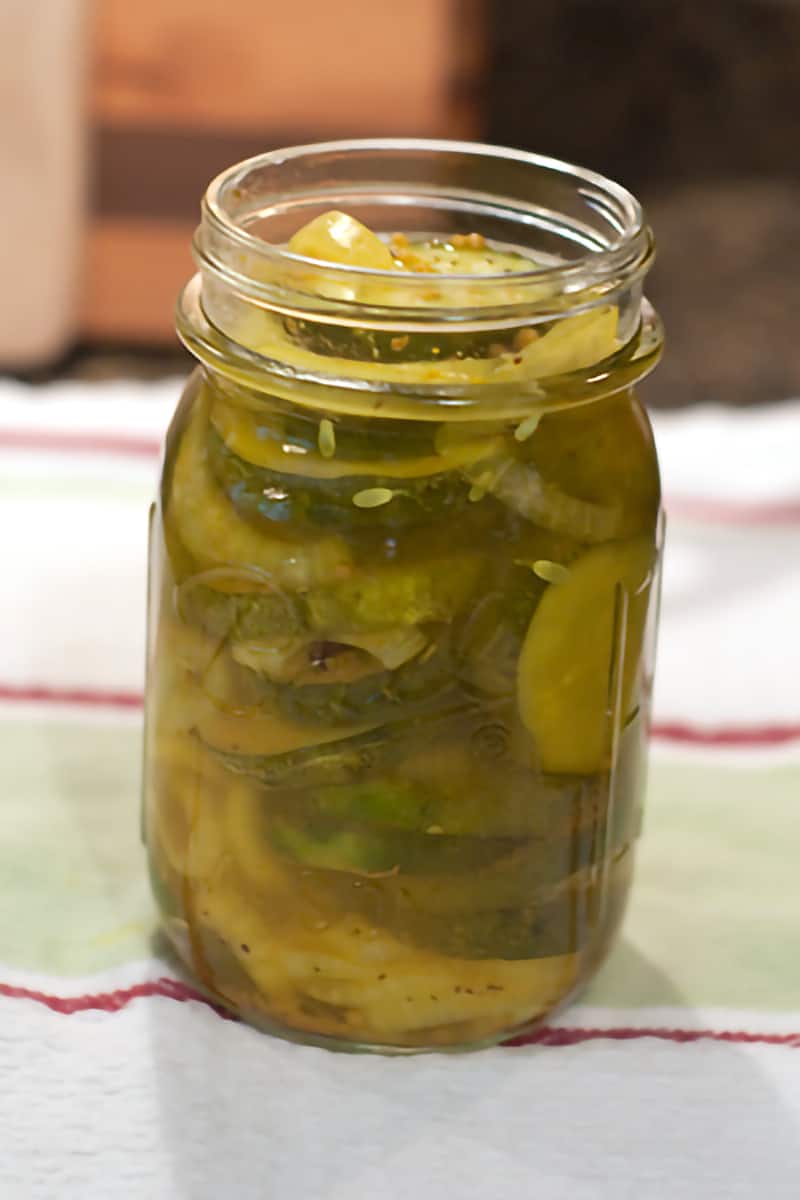
- Wipe the rim of the jar with a moistened paper towel. Use a magnetic lifter to pick up a jar lid from the hot water where it was held and apply it to the top of the jar. Add a ring, tightening it only until you feel slight resistance. Do not overtighten the rings. Set the filled jar on the rack in the canner. Continue until all jars are packed.
- When all the jars are filled, lower the jars on their rack into the boiling water canner. The water in the canner should cover the tops of the jars by 1 to 2 inches. Cover the canner and bring the water up to a gentle boil. Once the boiling point is reached, process the jars for 15 minutes.
- Use a jar lifter to carefully remove processed jars from the canner and place them on a clean, folded towel to cool completely. After the jars are cool, check to make sure the seals are complete. See below for how to test for a complete seal.
- Store in a cool, dark place for up to one year. Refrigerate jars after opening.
🧪 Test the Jars For a Complete Seal
To test home canned goods for a complete seal, first remove the ring from the jar. Then, gently press the center of the lid. If there is any movement then the jar did not seal. Next, very gently pull upward trying to lift the jar by the edges of the lid. If the lid pulls away, obviously it didn’t seal. The pickles are still good and can be placed in the refrigerator, but can’t be stored outside of refrigeration.
❓ Questions About Sugar-Free Bread and Butter Pickles
You always want to remove about a 1/16″ slice from the blossom end of cucumbers before pickling. The reason is because of an enzyme in the blossom end of cucumbers that can cause pickles to be too soft. Removing that tiny slice will help eliminate that problem.
I am absolutely not an expert on the keto diet, but it is my understanding that these pickles are acceptable for those following keto since they don’t contain any sugar at all.
Adding salt to raw vegetables draws much of the moisture out of them. This process helps the cucumbers and onions stay crispier after pickling than they would without salting. Be sure to measure the amount of salt carefully. Too much can affect the flavor of the pickles.
If you want to store the pickles in the pantry, you must process them using the boiling water process. This process heats the jars to temperatures adequate to destroy any microbes that might cause spoilage and forms an airtight seal to prevent further microbes from entering the jar.
If you want to skip the boiling water process and just keep these pickles in the refrigerator, you’ll follow the recipe through filling the jars skipping the instructions to heat water in the canner. After filling the jars, allow them to cool completely and then store them in your refrigerator. The pickles will last up to 6 months in your fridge. They will get a bit softer the longer they sit, but should still taste good for a long time.
🧾 More Recipes You’ll Like

Questions? I’m happy to help!
If you have more questions about the recipe, or if you’ve made it and would like to leave a comment, scroll down to leave your thoughts, questions, and/or rating!
Thanks so much for stopping by!
📖 Recipe
Want to save this recipe?
Enter your email below and get it sent straight to your inbox.
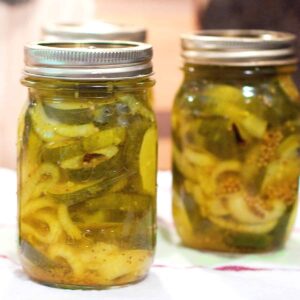
Sugar-Free Bread and Butter Pickles
Ingredients
- 2 pounds pickling cucumbers
- 1 medium onion
- 3 tablespoons kosher salt
- 2 ½ cups white vinegar
- 1 ¼ cups sugar substitute (cup-for-cup measure such as Splenda)
- 1 tablespoon mustard seed
- 1 tablespoon celery seed
- 1 teaspoon ground turmeric
- ½ teaspoon whole cloves
Instructions
- Prepare the cucumbers – wash thoroughly removing any dirt from the skin of the cucumbers. Remove a thin (1/16 inch) slice from the blossom end of each cucumber and discard.
- Slice cucumbers into rounds approximately ¼ inch thick.
- Prepare the onion – peel the onion and slice into ¼ inch thick slices. Separate the onion rings.
- Place the cucumbers and onions in a large bowl and sprinkle with the salt. Toss so that the salt is distributed throughout the vegetables. Allow to stand at room temperature for two hours.
- Drain the cucumbers and onions in a colander. Rinse thoroughly and drain again. Spread the vegetables on a double thickness of paper towels and pat dry with additional paper towels.
- Prepare 3 pint (or 6 half-pint) jars by washing in hot soapy water and rinsing well. Prepare lids and rings according to manufacturer’s directions.
- Fill a boiling water canner ¾ full with water. Add the clean jars to the canner and bring to the boil. Keep lids warm in a pan of barely simmering water.
- Meanwhile, combine the vinegar, sugar substitute, mustard seed, celery seed, turmeric, and cloves in a large saucepan. Bring to a boil over medium-high heat.
- Add the cucumbers and onions and allow the mixture to return to a boil.
- Working with one jar at a time, use a slotted spoon to pack vegetables into hot jars filling to ¼ inch of tops. Ladle in pickling liquid to cover the vegetables.
- Wipe the jar rim with a moistened paper towel and apply a canning lid and ring. Rings should be just fingertip tight. Return the filled jar to the canner and continue until all jars are packed.
- When all jars are filled, lower the jars into the boiling water canner. Water should cover the tops of the jars by 1 to 2 inches. Cover the canner and bring the water to a gentle boil. Process for 15 minutes.
- Remove jars from the canner and place on a towel to cool completely. After the jars are cool, check to make sure the seals are complete.
- Store in a cool, dark place for up to one year. Refrigerate jars after opening.
Notes
- Use only pickling type cucumbers for your pickles (often labeled “kirby” or “salad” cucumbers).
- When preparing the cucumbers, remove about a 1/16″ slice from the blossom end of cucumbers before pickling.
- You must use the water bath canning process if you wish to store the pickles out from under refrigeration.
Nutrition Information
Nutrition information is calculated by software based on the ingredients in each recipe. It is an estimate only and is provided for informational purposes. You should consult your healthcare provider or a registered dietitian if precise nutrition calculations are needed for health reasons.
— This post was originally published on July 5, 2013. It has been updated with additional information.
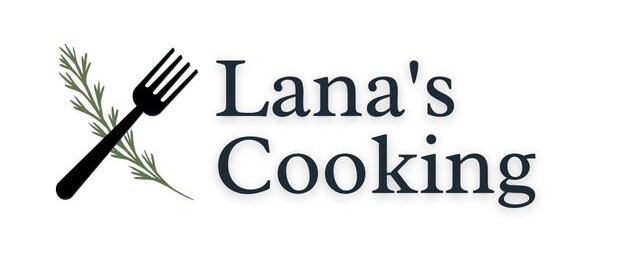
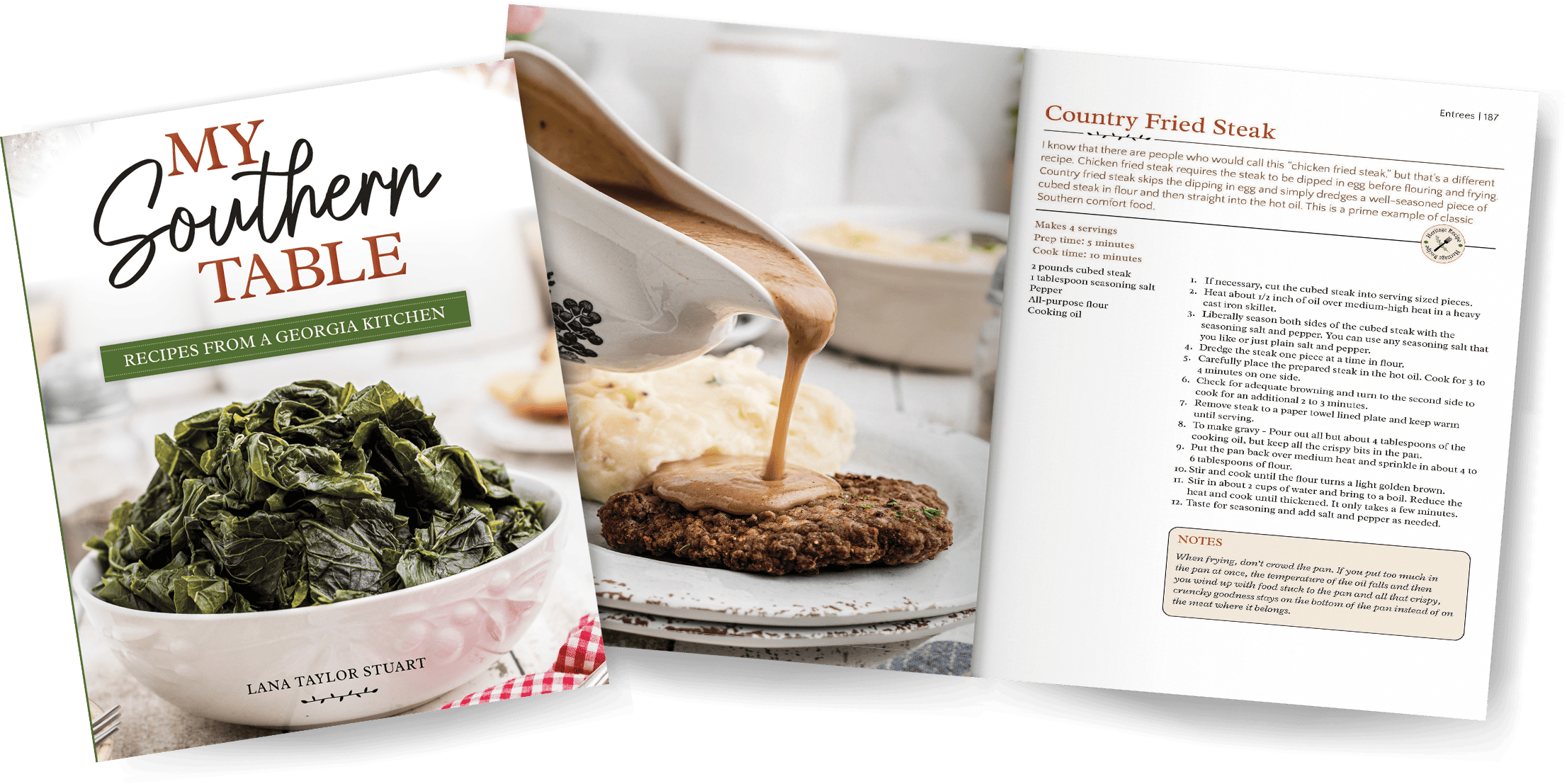
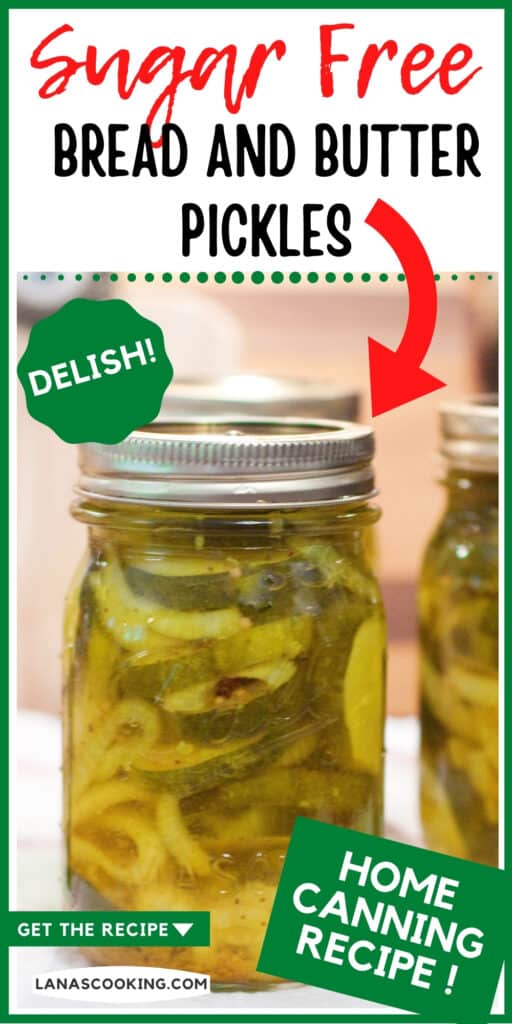
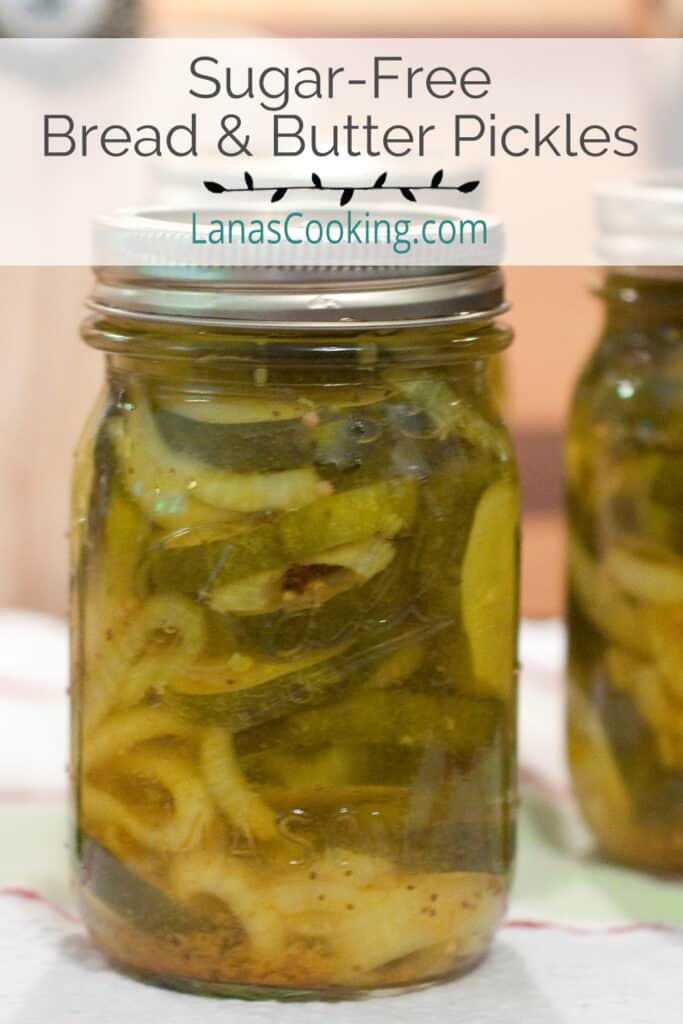
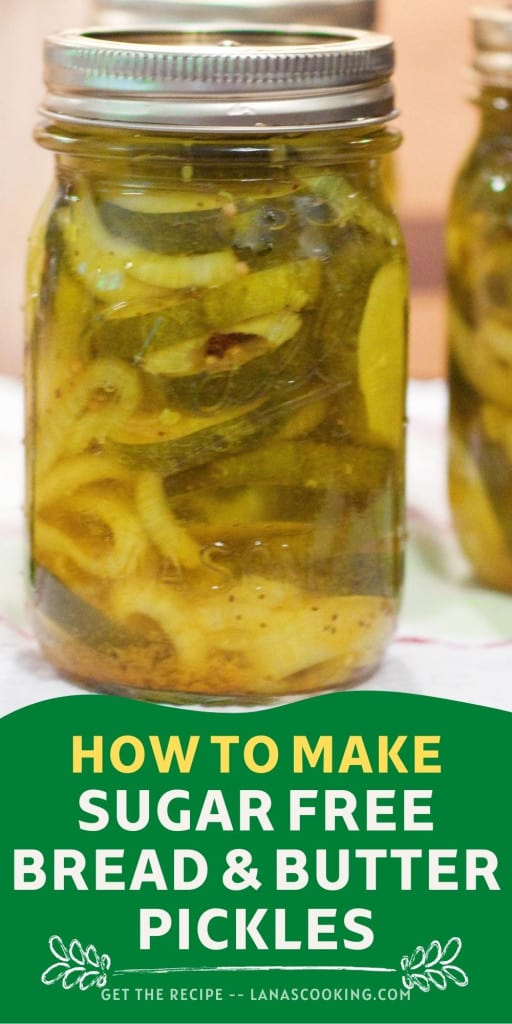
Was very disappointed I have canned for years and followed this to a tee. I know everyone has different taste. Anyone that tasted these made a terrible puckered face. They are way too sour, the recipe should have some water in it, way too strong. 😥
Wow, Brenda, I’m so sorry you had disappointing results with this recipe. I am also a long-time canner (about 45 years) and this is one of my all-time favorite recipes. Everyone that has ever tried it has raved about how it tastes exactly like bread and butter pickles made with loads of sugar. And I’ve never had a “sour” result. Ever.
Hello Lana, This is my second season of using your kosher dill recipe. It does indeed take nearly constant attention to keep the temperature in the correct zone for the full time but I love the outcome of firm pickles without over cooking.
I would like to try your sugar free recipe but don’t do Splenda. Do you have any recommendations for using xylitol or a stevia product? Thank you so much.
I’m so glad that you enjoy the dill pickle recipe! But I’m sorry I don’t have any information on other sweeteners for the B&B pickles. Wish I could help.
would i be able to substitute the sugar for honey? if so, how much?
So, this recipe doesn’t use sugar — it uses a sugar substitute. I haven’t tested this recipe using honey in place of the sugar substitute. There is a lot of information online about substituting honey for sugar in canning recipes. I’d encourage you to do some research and make your own decision.
Can you leave them in the salt overnight.
According to several online sources, yes, you can leave them overnight. I’ve never done that myself. I always let them stand for two hours.
This is year 2 making these. Last year I made 6 jars (a double recipe), this year because they ARE SOOOO GOOOOD, I made 4x … so ended up with 13 jars. The extra jar was because I had an extra cuc from the 3 litre baskets I bought and added more onions (love love love them on burgers!)
I have found that 2 lbs of cucs are around 7 … in case anyone is curious. DELISH!!!!
I’m so glad you like the pickles! I think they’re delicious and hard to tell they’re sugar-free.
I followed the recipe exactly, tripling it due to the number of cucumbers I have.
It is AMAZING!
I simply can’t tell that this is a sugar substitute- thank you thank you thank you!
I agree, Judey. I think it’s really delicious and such a good option for people who can’t consume much sugar.
I made these pickles for a friend who had diabetes. she actually ate the whole jar in one seating. I made another batch on her son gives her a little everyday. so glad I found this receipe
I’m happy to know that you friend enjoys the pickles!
Just finished making my first batch. Very easy recipe to follow with your excellent directions.
Great! Hope you enjoy them.
Lana, yes I was asking if I could use leftover picking juice. Thank you I hate to waste anything.
Also, can I save the left over pickling juice to use for the pickles I will made next weekend?
Hi Tessa. I’m not exactly sure what you’re asking. Are you saying you’ve already made these pickles and had extra brine left over that you want to use for making more pickles? If so, yes you can save it. Put it in a sealed container and keep it in the refrigerator.
How long do these need to sit in the pantry before they are good and pickled?
You can enjoy them right away if you like, but they’re best if you let them sit for about a month before opening.
Is there a substitute for the whole cloves?
Unfortunately, there isn’t a substitute that will taste exactly the same. If you don’t want to use cloves, maybe try whole cinnamon sticks.
You mention they taste different than regular bread & butter pickles, can you explain how?
I was responding to someone who asked for a substitute for the whole cloves in the recipe and explained that she could possibly substitute cinnamon but that it wouldn’t taste the same. Sorry if that was confusing.
Hello,
Can you freeze these pickles? I can find many freezer pickle recipes but none without loads of sugar.
I have not tested freezing these pickles so I’m afraid I can’t advise on that.
Hey there. My brother follows a keto diet and had to give up his beloved bread and butter pickles. I was thinking of making these for him as a nice Christmas gift. He prefers to use Swerve sugar substitute when he makes things from scratch. Do you think that Swerve would work in this recipe instead of splenda? Also, are the cloves necessary to the flavor profile? I never would have thought that cloves are needed but then again I don’t really eat B&B pickles so maybe they are?
Hi Jen. That’s an interesting question and one that I don’t have a definite answer for. I’ve never worked with Swerve so I did some reading on it. It says that it’s a cup-for-cup sugar substitute which is the same thing Splenda claims. However, I never recommend making changes to a proven canning recipe because of the risks involved in changing the pH and making the entire recipe unstable for shelf storage. What I *can* recommend is that you make the recipe with Swerve and just refrigerate the pickles rather than going through the canning process. That way you’d be assured that the pickles would be stored safely.
To answer your second question — yes, cloves are absolutely necessary for the traditional flavor profile of B&B pickles. They wouldn’t taste like B&Bs without them.
Good luck finding pickling cucumbers this time of year! But then, maybe you’re in the southern hemisphere where it’s warm :-)
Thank you! Yes, I would say that if the recipe works out and my brother enjoys them that they would not last very long in the refrigerator because he would demolish them. I think I will do a test batch and see how things go! Assuming I can find the cucumbers that would be needed. Thank you for your help and insight.
You’re very welcome, Jen. I really hope the recipe works out well for you!
These are amazing! I made them three days ago and didn’t can them, I just let them cool and popped them in the fridge. Half of them were eaten in a day. I made another batch yesterday and didn’t can them since I feel they will be eaten soon too!
Thanks for this amazing no sugar recipe! Yum!
I’m so glad that you like them! Reminds me I need to make some more myself.
Am I reading this right? No added sugar, but nutrition info reads 9gr sugar and 0gr fiber. Is there that many grs in just the cukes & onions?
Thanks. Donna
This recipe is made using Splenda sugar substitute. The components of Splenda are maltodextrin and sucralose, both of which are carbohydrates. Carbs break down into sugars, thus the resulting sugar content in the nutrition information calculation. Far, far less than bread and butter pickle recipes that use granulated white sugar.
I am new to canning! Are these pickles ready to eat immediately? Or do they need to set for so long? If so how long?
They’re best if you let them sit for at least a week before eating.
You should have used Bermuda/red onions. DOH!
I just made up a bath of these today. I want to congratulate you on the PERFECT measurements. I prepared an extra 4th pint jar based on some of my last experiences, ,but this was right on! Thanks. I can’t wait to give these a whirl.
Hi there! I pinned this great recipe last summer and I have a question on my pin: is it eleven and one/fourth cups splenda or one and one/fourth cups? I was pretty sure it was eleven but I have never worked with Splenda so I wasn’t sure. Here’s the link to the pin! http://www.pinterest.com/pin/257338566180681037/
If you could answer it, I would appreciate it! Thanks, Kelli
Kelli – it’s 1 1/4 (one and one-fourth) cups Splenda.
Thanks so much! I commented on the pin and I’m sure the young woman will be able to make them now!
Between myself and our youngest daughter, we could wipe you clean of bread and butter pickles. Yum!!
Wish you were close by, Brenda! I’d bring you a couple of jars :-)
Love the idea of a lower sugar alternative!
Me too, Aly! These are totally guilt free!
Hmm, interesting and something I might never have considered doing for fear of messing with the canning Gods. I sure do love B&B pickles but I sure would love to not have them include so much sugar…thinking I might have to try this for a couple of jars…thanks Lana.
I know just what you mean, Barb. I rarely will use a canning recipe that hasn’t been tested and approved by the USDA. Unless you have a lab and know how to do the testing, you really can’t state with authority that a recipe is safe. That being said, however, based on about 30 years of canning experience I feel 99.9% sure this would be completely safe. The solution is pure undiluted vinegar with spices and sugar substitute added. The vinegar should easily make the product shelf stable. However, if you’re ever unsure you can always just refrigerate your jars from the very outset.